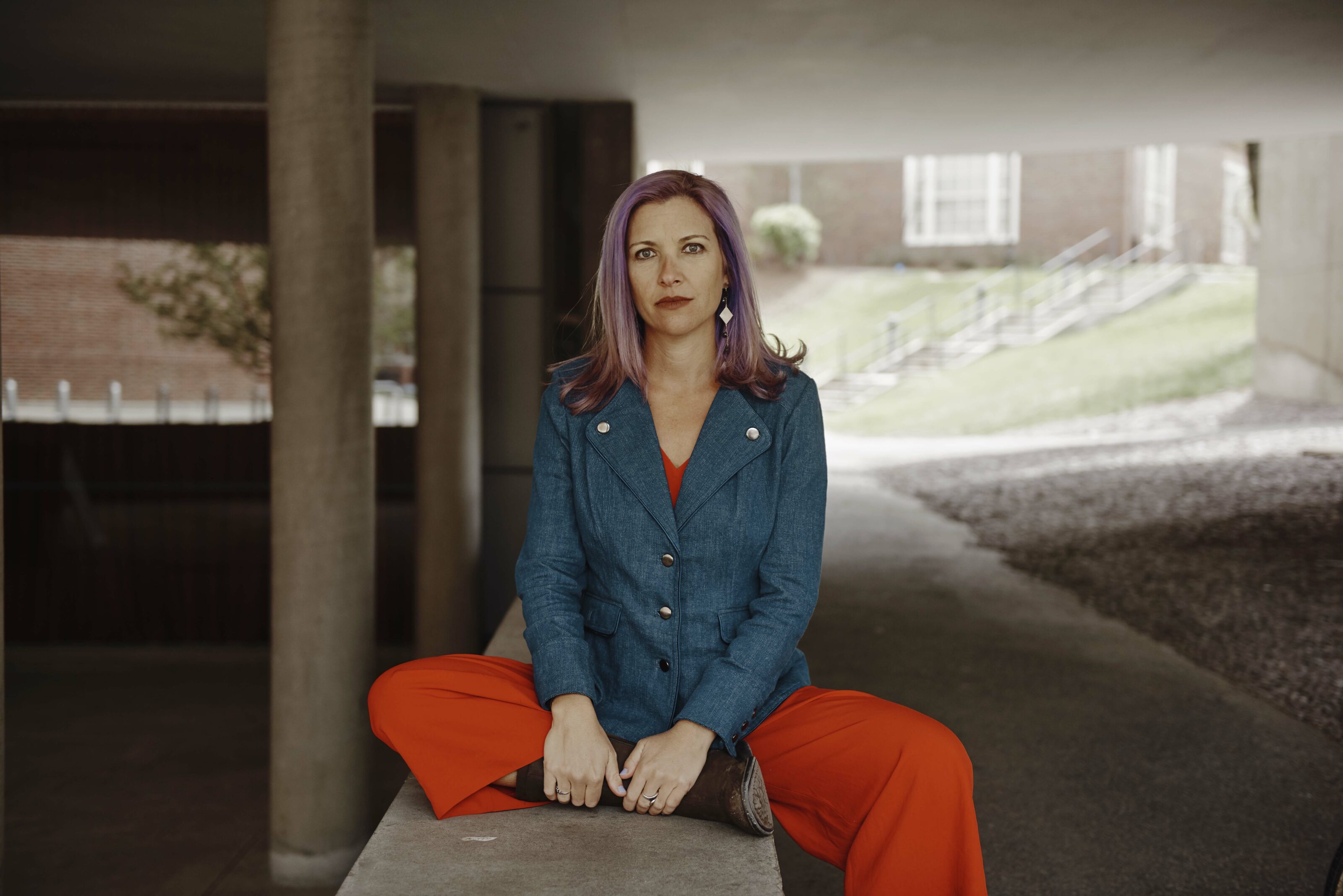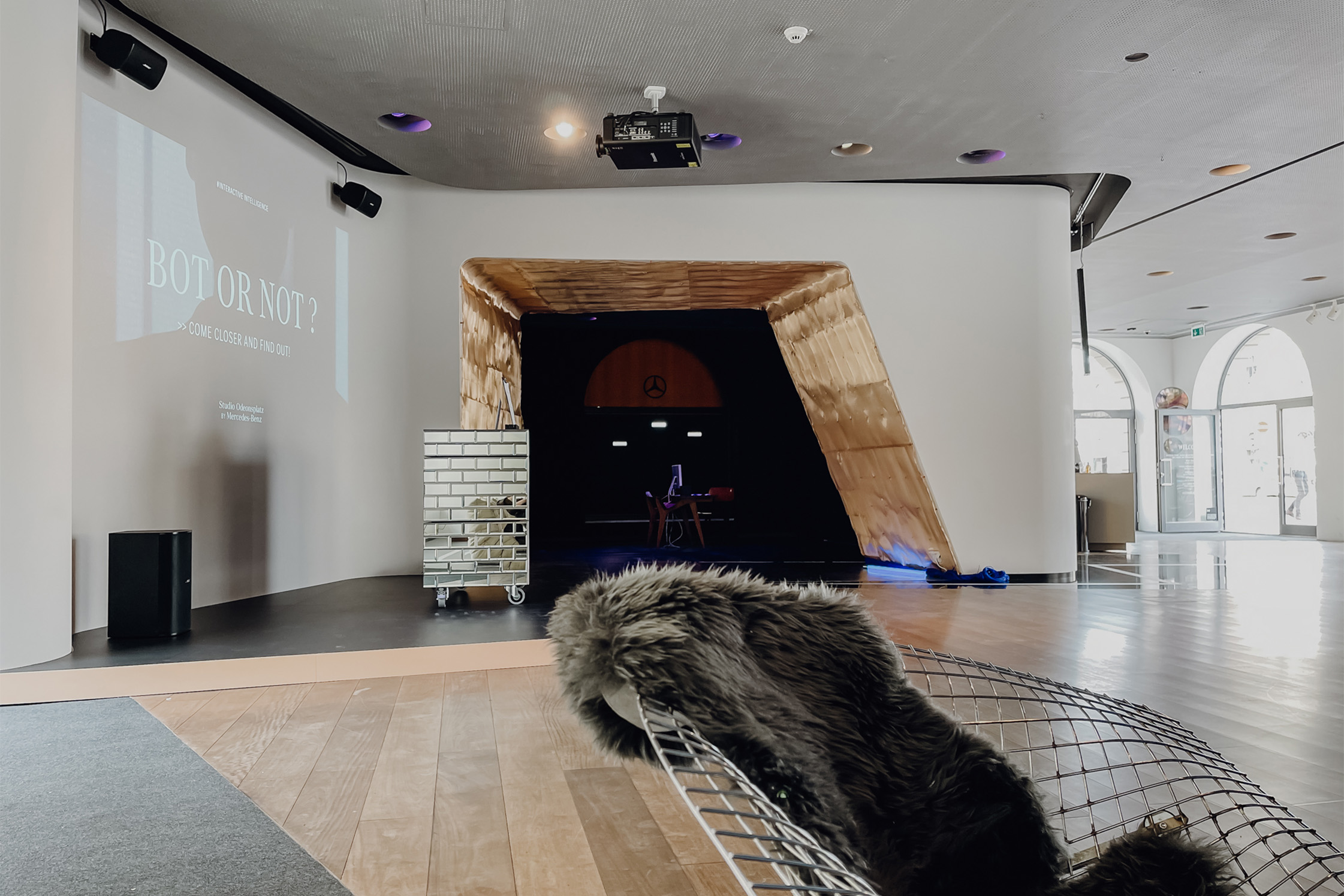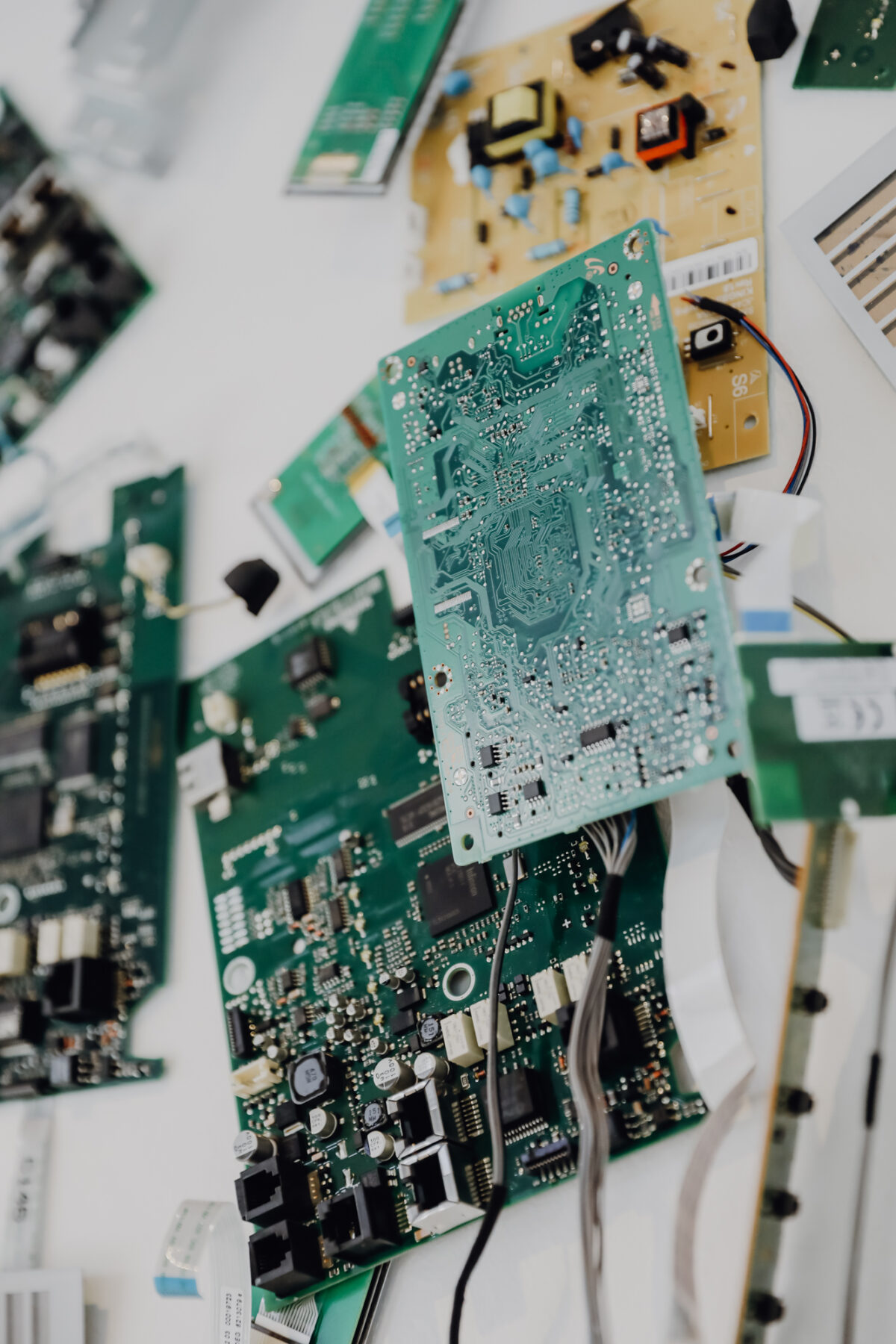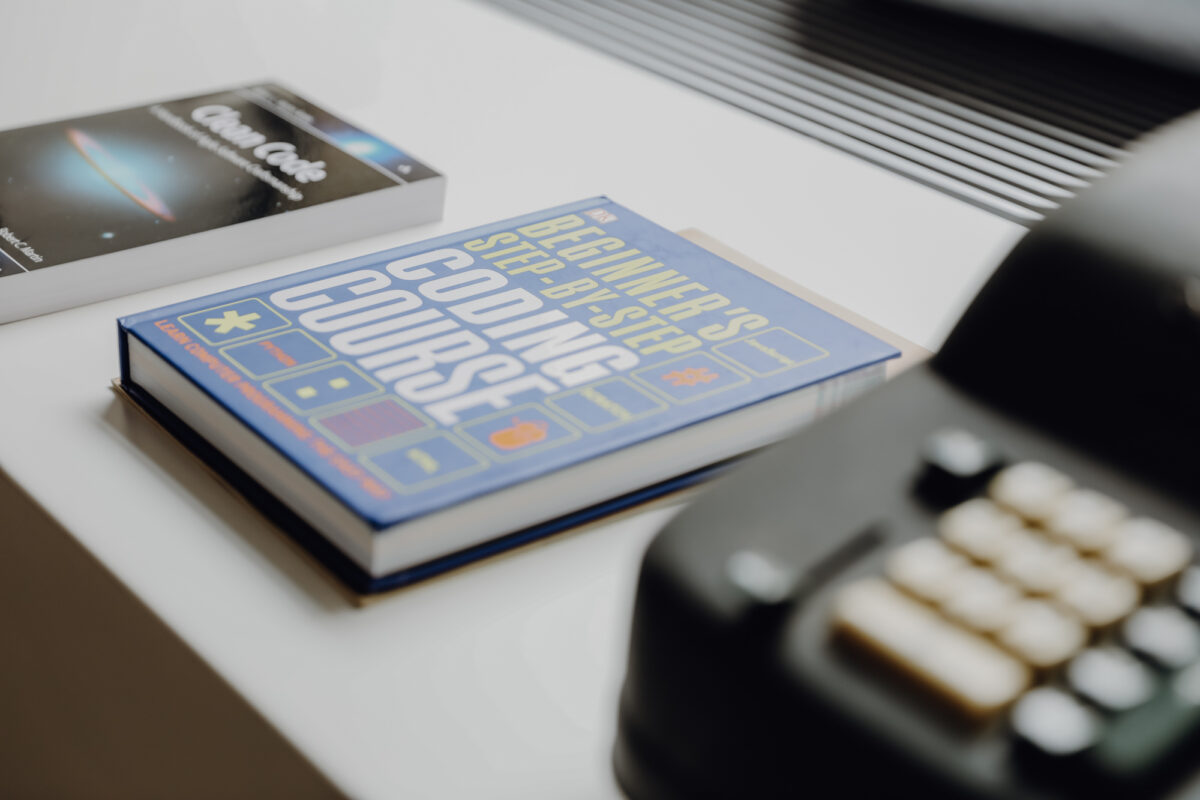Would you prefer to trust a computer or a human with your secrets? The Director of Art and Education at Harvard’s interdisciplinary metaLAB discusses the ever-changing relationship between humans and machines, and how this is explored through her installation The Future of Secrets, which will be shared as part of the Interactive Intelligence campaign at Mercedes-Benz’s new creative space in Munich, Studio Odeonsplatz.
Florida-born artist Sarah Newman grew up in a household that de-emphasized technology. “We didn’t have video games, cable television, or anything like that,” she says. Instead encouraged by her parents to go outside to play, and to make up her own games using her imagination, Newman became extremely inventive from a young age. “I went to public school in Miami, but for Grades 1-6, I only went to regular school three days per week. The other two days, I went to a different school that was highly creative and unconventional. It helped me see beyond the limits of traditional education: we were cooking with the metric system, doing algebra problems without guidance, and coming up with scientific theories,” she adds, noting that her education encouraged her not to differentiate scientific and artistic practices.
With this in mind, it’s no surprise that, as a child, Newman became infatuated with photography—at age 17 she won the prestigious National Scholastic Pinnacle Award for her work—a medium that naturally sits between the realms of technology and creative practice. “Technology mediates the way we see the world,” she says, alluding to conversations about the relationship between humans and machines that now permeate her artistic works, including The Future of Secrets.




“Technology mediates the way we see the world.”
Born out of Newman’s interest in the legacy our private data and correspondence will leave to future generations, The Future of Secrets started with a question: “what are our great-grandchildren going to be able to find out about us from our emails? Will these slices of information taken out of context be accurate representations of us?” To kick off her research, Newman created a survey asking people how they feel about the past and if they’d like to know more about their family ancestry. She also asked them whether they’d be comfortable with their descendants having full access to their online correspondence. “The contrast between what people wanted to know about the past and how comfortable they would be with what people may find in the future was stark.”
Working with her collaborator Jessica Yurkofsky and gathering invaluable information from her colleagues at metaLAB—an idea foundry, knowledge-design lab, and production studio where Newman is the Director of Art and Education—as well as the wider Berkman Klein Center community at Harvard University which metaLAB is affiliated, and where Newman is a fellow, she condensed her research into a minimal, interactive exhibition comparable to a “digital confession booth,” where viewers are invited to type a secret into a computer positioned in the middle of an otherwise empty space. As soon as a secret is typed in, someone else’s previously input secret is printed out on a receipt printer, and a whole host of other secrets become visible and audible through projections and a sound installation. “It’s like an antidote to social media where everyone brags about their lives, which in turn makes other people feel bad about themselves,” says Newman. “Because The Future of Secrets installation is anonymous, people feel free to share things they wouldn’t intentionally share publicly online. It’s cathartic: you’re able to release things that have been weighing on you and realise you’re not alone. I think it creates a sense of relief and human connection.”
It’s interesting and refreshing to hear that visitors’ experiences to an installation analysing the human-machine relationship are positive and joyful, especially when technological advancements are often portrayed negatively in the media. “There’s a lot of laughter and levity, even when the content can be quite dark,” says Newman, explaining that The Future of Secrets helps promote empathy between its visitors. “I think it softens the way we perceive strangers,” says Newman. “Usually, you can’t see the way others are struggling. But when you read their secrets as part of this installation, and then see a room full of people, even though you don’t know which secret belongs to whom, you realise that everyone has a lot more going on that you could possibly know.”



“Humans make meaning from the world: we interpret the information we receive, and we tend to project agency and intelligence onto systems when we don’t understand how they work.”
This positive example of how technology can bring people together feels extremely relevant in the wake of the global pandemic, as innovations such as video calling have enabled families to stay in touch despite being physically separated. “Technology can be distancing, but there are some instances when it can make people feel more connected. I think it’s really important to explore these opportunities,” says Newman. As an example, she describes the app Ocarina, developed by Stanford-based designer Ge Wang. “It’s basically a way to take your phone and turn it into a wind instrument by blowing into the microphone. It’s really lovely because you can make your own music, and also see and hear other people from all over the world who are doing the same thing. It’s such a beautiful way to use technology creatively to feel connected with others, even from a distance.”
The Future of Secrets not only explores the nature of inter-human connections. As it has been shown at venues around the world, a new theme has emerged: how humans build narratives around machines. “One of the things I noticed really quickly was that people were starting to tell stories about why they would receive a secret,” says Newman. “They would say, how did it know that this was my other secret that I was thinking of typing in?” In the beginning, these connections were entirely concocted, as the secrets the computer printed were randomly drawn from the secrets database. Now, the system has a new algorithm so that it sometimes prints secrets that are related to what people have just typed. In some cases, however, it continues to print unrelated information. “People tend to think there’s a logic to it because humans make meaning from the world: we interpret the information we get, and we tend to project agency and intelligence onto systems when we don’t understand how they work.”







As technology, machines, and computers have developed—some are now anthropomorphised to have “faces, voices, eyes, and human names: anything that is human-like usually makes machines seem like they have more agency, personality, or intelligence”—some people have come to trust them even more than their fellow humans. Newman proposes potential reasons for this. “While machines, like people, are not neutral or infallible, they can be better at certain discrete tasks than humans because they have more data to draw on.” As an example, she uses following GPS navigation versus someone sitting instructing you based on a paper map. “The GPS can bring in real-time traffic data and usually more accurately recommend the best route.”
Another reason for an increased trust or affection for machines could be that “a relationship with a machine is one-sided, and experienced only by the human. Conversely, human-human interactions are relational for both individuals: they carry the instincts, hesitations, and fears that we have with other humans.” Newman references some studies with army veterans suffering from PTSD which showed that some were more comfortable speaking to a digital therapist or “bot” as opposed to a human one. “It allowed the veterans to feel more comfortable to share and to be vulnerable, which had meaningful and positive outcomes,” she says. “It’s similar in The Future of Secrets: sharing private, sensitive information with a machine has a wholly different experiential quality than with another person. I think this is because people don’t feel judged by machines in the way they might do by humans.”
Newman is excited to see how her exhibition will be received and potentially spark more new interpretations, themes, and questions at its first post-pandemic showing as part of Mercedes-Benz’s Interactive Intelligence campaign. Taking place at Studio Odeonsplatz in Munich, it will inspire dialogues around the question of how our relationships with machines will continue to develop in the future. “In this new era where people have been so isolated, I’m curious to see if there’s going to be an influx of new types of secrets,” she says. “It’s been a very unusual time for the entire world, so who knows? Maybe people’s submissions will be different than they were before.” After this presentation, Newman hopes that the installation will find a home in several international museums where people could input secrets that would go to one central database and be redistributed out to all the different locations where The Future of Secrets was on display. “This way, you could exchange secrets with other people from the other side of the world.”
Looking further into the future, Newman also has hopes for the future of our relationship with technology: hopes that AI systems will be able to help society in medical and environmental domains. “In medicine, this could include prevention, diagnosis, and treatment. In the environmental domain, this might include more efficient uses of cleaner energy reducing food waste, and better distributing resources to the places that need them most. However, we must also be cautious when creating big and powerful systems so that they have the maximum benefit, and the minimum harm, to all. This is a tall order, and it is something that has always been a struggle with innovation throughout human history. We have an opportunity here to leverage these technologies for a tremendous amount of good. But they must be responsibly developed and carefully regulated.” Newman also hopes that society will realise that technology can also help us to reflect on what it means to be human. “We created these technologies: they reflect the world we live in, and we should aspire to have them reflect the world we want.”

Sarah Newman is an artist working at the intersection of art and research, as well as the director of Art and Education at Harvard’s metaLAB. Her interactive exhibition, The Future of Secrets, has been shown around the world, prompting people to think about their relationships with machines, the internet, technology, and the information they are leaving behind. Mercedes-Benz will be presenting the installation at StudioOdeonsplatz in Munich, an innovative prototype format where art, content, creativity, and digitization collide.
To find out more about Newman’s work, head over to her website. Or, if you’d like to read some similar Friends of Friends, why not check out this profile of Berlin-based sculptor Simon Denny, who works on representing the gap between “the stories that are sold to people about technology” and the reality of life through his installations.

